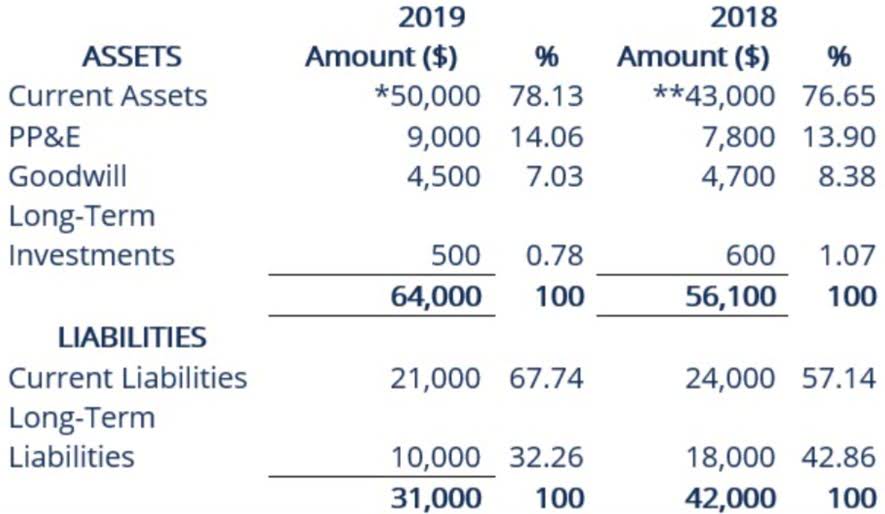
Net working capital is a liquidity calculation that measures a company’s ability to pay off its current liabilities with current assets. This measurement is important to management, vendors, and general creditors because it shows the firm’s short-term liquidity as well as management’s ability to use its assets efficiently. When computing the net working capital for financial analysis, it is important to make adjustments for non-operating items such as investments, long-term assets, and long-term liabilities.
- The Change in Working Capital could be positive or negative, and it will increase or reduce the company’s Cash Flow (and Unlevered Free Cash Flow, Free Cash Flow, and so on) depending on its sign.
- Generally, a working capital ratio of less than 1.0 is an indicator of liquidity problems, while a ratio higher than 2.0 indicates good liquidity.
- As a general rule, the more current assets a company has on its balance sheet relative to its current liabilities, the lower its liquidity risk (and the better off it’ll be).
- Current liabilities include accounts payable, trade credit, short-terms loans, and business lines of credit.
- Working capital encompasses the difference between current assets and current liabilities.
- At the same time, lower working capital can also cause difficulties in borrowing loans for terms.
- Hence, the company exhibits a negative working capital balance with a relatively limited need for short-term liquidity.
What is the impact of a negative change in working capital on a company’s financial health?

For example, imagine the appliance retailer ordered too much inventory – its cash will be tied up and unavailable for spending on other things (such as fixed assets and salaries). Moreover, it will need larger warehouses, will have Law Firm Accounts Receivable Management to pay for unnecessary storage, and will have no space to house other inventory. In other words, there are 63 days between when cash was invested in the process and when cash was returned to the company. Therefore, the working capital peg is set based on the implied cash on hand required to run a business post-closing and projected as a percentage of revenue (or the sum of a fixed amount of cash). On the subject of modeling working capital in a financial model, the primary challenge is determining the operating drivers that must be attached to each working capital line item. The best rule of thumb is to follow what the company does in its financial statements rather than trying to come up with your own definitions.
Add Up Current Liabilities
- Working capital is calculated by subtracting current liabilities from current assets.
- By following a few simple steps, anyone can calculate the change in net working capital and gain a better understanding of a company’s financial performance.
- Positive changes indicate improved liquidity, while negative changes may suggest financial strain.
- Taken together, this process represents the operating cycle (also called the cash conversion cycle).
- A change in net working capital is reflected in the cash flow statement as an adjustment to operating cash flow.
Note, only the operating current assets and operating current liabilities are highlighted in the screenshot, which we’ll soon elaborate on. The net working capital formula is calculated by subtracting the current liabilities from the current assets. An increase in working capital indicates a cash outflow because it means that a company is using more cash to finance its current operations. This is because an increase in working capital is typically caused by an increase in current assets or a decrease in current liabilities. Both of these changes require the use of cash, which bookkeeping results in a cash outflow. In addition, businesses can use the change in net working capital to evaluate the effectiveness of their management of current assets and liabilities.

Working Capital Requirement Formula
If it experiences a negative change, on the other hand, it can indicate that your company is struggling to meet its short-term obligations. Current assets include assets a company will use in fewer than 12 months in its business operations, such as cash, accounts receivable, and inventories of raw materials and finished goods. Current liabilities include accounts payable, trade credit, short-terms loans, and business lines of credit. Essentially, working capital is the amount of money a company has available to pay its short-term expenses.
Common Pitfalls in Calculation
- This, in turn, can lead to major changes in working capital from one month to the next.
- In this scenario, the company’s net working capital decreases, signaling potential cash flow constraints and liquidity challenges.
- This can be done by consulting with experts, reviewing relevant literature, and seeking feedback from colleagues.
- What is a more telling indicator of a company’s short-term liquidity is an increasing or decreasing trend in their net WC.
- The NWC metric measures a company’s liquidity, which is its ability to pay off its current liabilities with its current assets on hand.
- • Net working capital (NWC) is the difference between a company’s current assets and current liabilities.
Investors, analysts, and management use this data for strategic investments and credit approvals. Sufficient working capital can also help businesses — especially those with seasonal fluctuations — change in net working capital withstand slow periods. So, it’s essential for companies to take working capital management seriously when evaluating the short-term financial well-being of their business. It’s vital because it helps them pay their bills, buy things they need to sell and handle unexpected situations. If a company has enough working capital, it can usually run smoothly, keep its suppliers and customers happy, and grow. But if it doesn’t have enough, it can face financial troubles and might struggle to stay in business.
What is Negative Net Working Capital?

In this perfect storm, the retailer doesn’t have the funds to replenish the inventory flying off the shelves because it hasn’t collected enough cash from customers. Companies with significant working capital considerations must carefully and actively manage working capital to avoid inefficiencies and possible liquidity problems. Another common pitfall in calculating change in net working capital is misinterpretation of results.
However, there are some costs involved in these hedging transactions, which could affect cash flow. Change in net working capital refers to how a company’s net working capital fluctuates year-over-year. If your net working capital one year was $50,000 and the next year it was $75,000, you would have a positive net working capital change of $25,000.

It represents the amount of money a company has available to meet its short-term obligations. NWC is an important metric for investors and creditors because it provides insight into a company’s ability to pay its debts in the near future. Working capital, often referred to as the lifeblood of a business, represents the funds available for day-to-day operations. It encompasses current assets such as cash, inventory, and accounts receivable, minus current liabilities like accounts payable and short-term debt. Changes in working capital reflect the fluctuations in a company’s short-term assets and liabilities over a specific period. It is essential to analyze the factors contributing to the change in NWC to understand why a company’s liquidity has improved or worsened.
- If the change in working capital is positive, then you have more assets than liabilities.
- Current assets include assets a company will use in fewer than 12 months in its business operations, such as cash, accounts receivable, and inventories of raw materials and finished goods.
- If a business has significant capital reserves it may be able to scale its operations quite quickly, by investing in better equipment, for example.
- Each one of these steps will help improve the short-term liquidity of the company and positively impact the analysis of net working capital.
- Moreover, it will need larger warehouses, will have to pay for unnecessary storage, and will have no space to house other inventory.
Working Capital Ratio Formula
Net working capital is the financial cushion that allows businesses to meet their short-term financial obligations. Think of it as the money set aside to pay your monthly rent, salaries, and utility bills. With enough net working capital, a company might be able to keep its operations afloat and avoid running into financial trouble. The change in working capital formula is straightforward once you know your balance sheet. A company’s collection policy is a written document that includes the protocol for tackling owed debts.

Leave A Comment